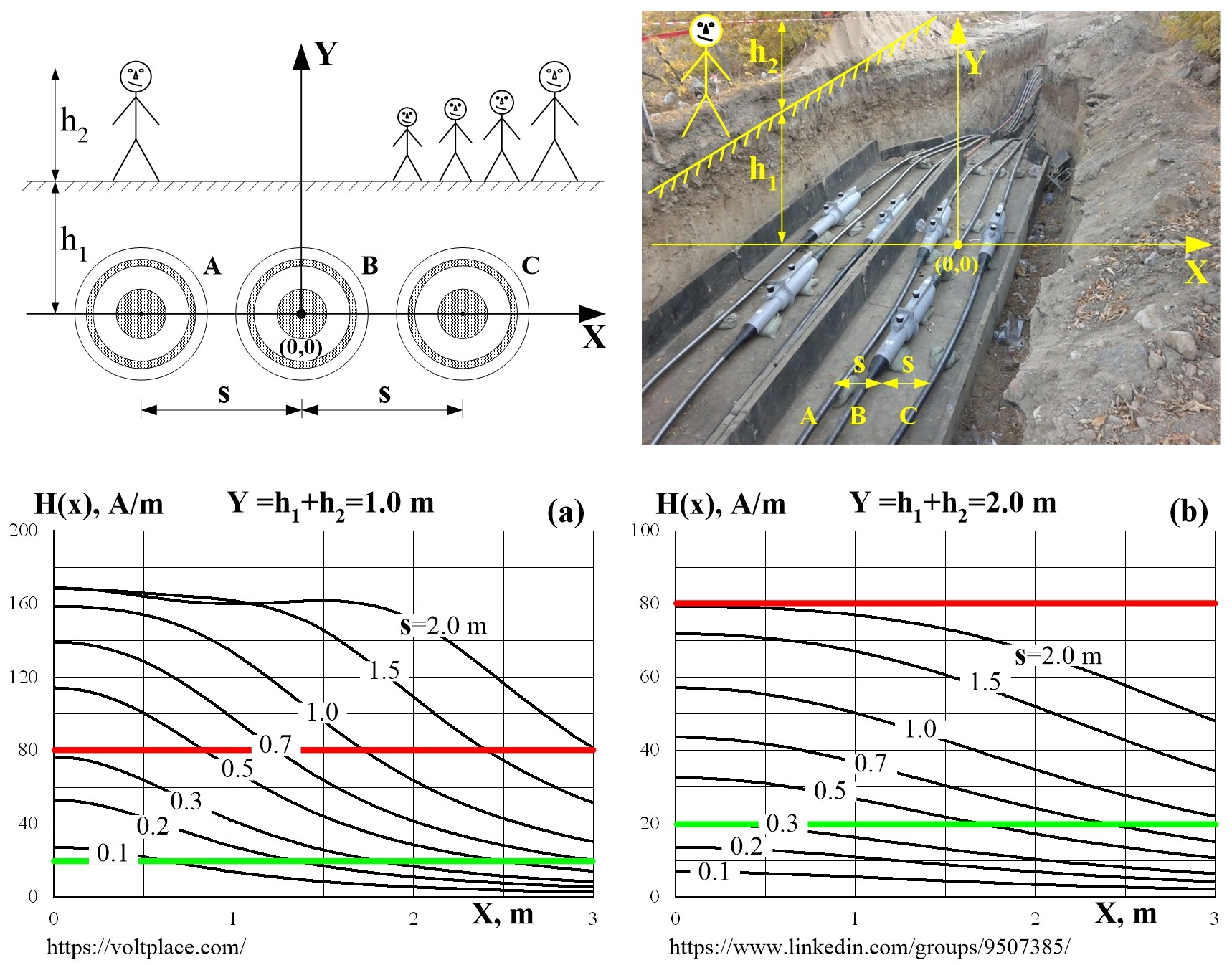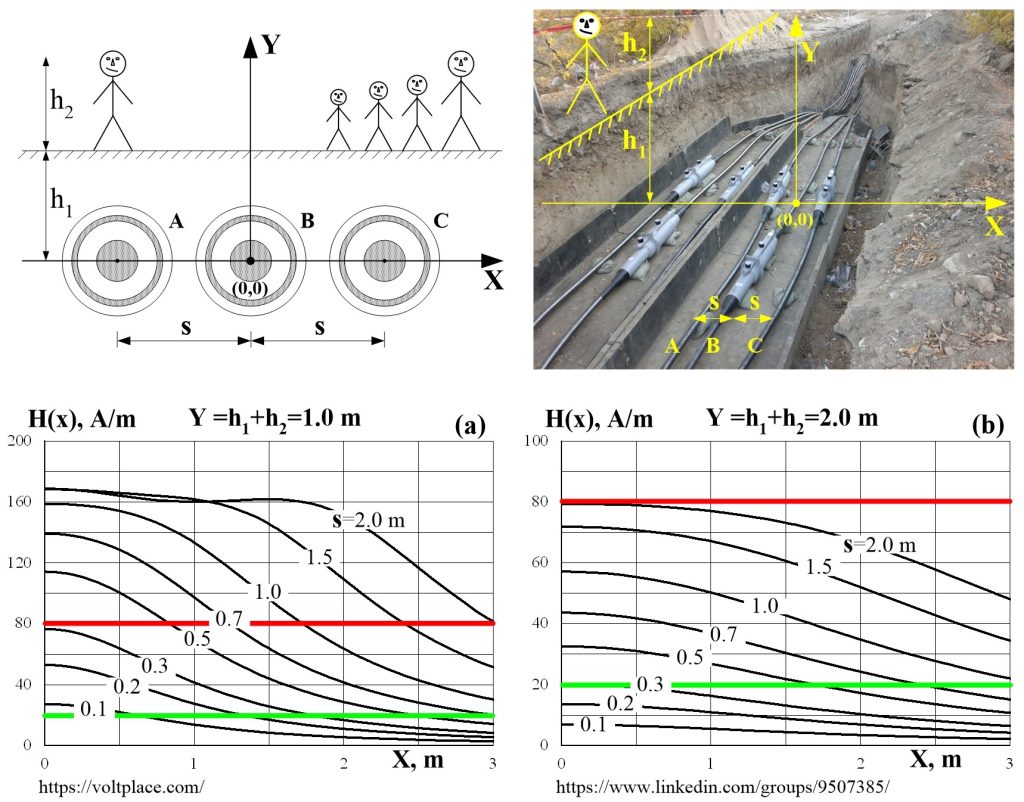
The magnetic field – it exists!
When designing cable lines, it is very rare to find such projects where there is a section of documentation in which calculations of the magnitude of the magnetic field H of the cable line would be carried out. At the same time, the magnetic field H can pose a significant danger, primarily under the following circumstances:
1️⃣ The cable line is made of single-core cables.
2️⃣ Single-core cables are arranged in a row at a distance S from each other (see the scheme).
3️⃣ The distance between single-core cables exceeds the standard S=0.2-0.3 m (please see the photo, where cable joints are installed, and distance can reach S=0.5-1.0 m or even more).
4️⃣ The depth of the cables underground does not exceed h1=1-2 m.
5️⃣ The AC 50 Hz current in the cable core in normal operation mode exceeds value of 500-1000 A.

An example of calculating the effective value H of the magnetic field strength of a cable line is shown in Figures (a) and (b). The calculations were performed with a current in the cores of 1000 A and no induced currents in the cable metallic screens (the case of one-side grounding of the screens or their cross-bonding). The calculations do not depend on the voltage class of the cable line and are common for any 6-500 kV lines made with single-core cables.
If we assume that the distance from the human chest to the cables laid underground is Y=h1+h2 = 2 m, then, using Figure (b), it can be seen that for a person who is directly above the cable line (X=0), the magnetic field strength, depending on the distance S between phases, in some cases may reach H=80 A/m.
To understand whether such a field H is dangerous for person or not, it is necessary to know the permissible field strengths for residential and uninhabited area, as well as depending on the time a person stays in the zone of action of the magnetic field. For example, in some countries, value of 16 A/m is called as the permissible for a residential area (green line in Figures is 20 A/m). If the area is uninhabited and difficult to access, with occasional short-term stay of people, then the permissible value is called as 80 A/m (red line in Figures).
Comparing the calculations (b) with the permissible values of 16 (80) A/m, it becomes clear that the levels of the magnetic field may exceed the permissible values, especially in those places where the distances between the phases exceed S=0.2-0.3 m, i.e. in the area of cable joints.
Therefore, the locations of the joints should be arranged at a distance from the places where people stay. This is especially true for 110-500 kV lines, where normal operation mode currents can easily be >1000 A. Perhaps in such cases, the joints’ fields should be taken out not only away from people, but also fenced off, so that a person would never stay above them (it means there are no cases with X<2-3 m allowed).
I believe, the magnetic field calculations should be a mandatory for any project of 110-500 kV cable line.
